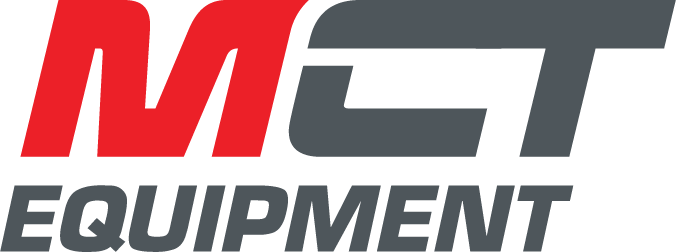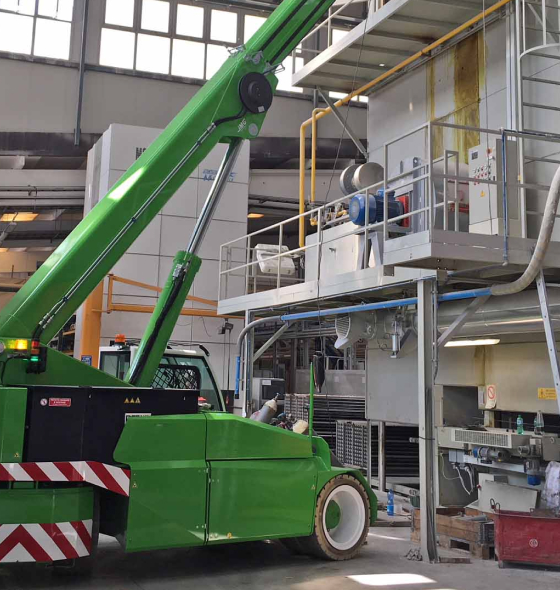The 5 Most Common Types of Cranes and Their Applications in Construction
Cranes are indispensable in the construction industry, offering the lifting power required for various projects, from towering skyscrapers to remote industrial sites. Each type of crane is uniquely designed to handle specific tasks, ensuring safety, efficiency, and precision on the job site.
In this blog, we’ll explore the five most common types of cranes used in construction, their features, applications, and the advantages they bring to the industry. Along the way, we’ll also highlight how MCT Equipment’s crane range can meet your project’s unique requirements.
Why Cranes Are Essential in Construction
Cranes are critical for handling heavy materials and equipment that would be impossible to manage manually. They allow for:
- Efficient material handling: Moving large loads with minimal effort.
- Improved safety: Reducing the risk of accidents by handling loads precisely.
- Project scalability: Accommodating everything from small builds to massive infrastructure projects.
By choosing the right crane, construction professionals can save time, reduce costs, and ensure smooth project execution.
Comparison Table: Crane Types
| Crane Type | Height Capacity | Load Capacity | Terrain Suitability | Key Applications |
| Tower Cranes | Very High | Very Heavy | Fixed Base | High-rise buildings, bridges |
| Mobile Cranes | Moderate | Light to Medium | All-Terrain (Road Access) | General construction, small projects |
| Crawler Cranes | High | Extremely Heavy | Uneven or Soft Terrain | Infrastructure, industrial sites |
| Overhead Cranes | Limited (Indoor Use) | Heavy | Indoors | Factories, warehouses |
| Rough Terrain Cranes | Moderate | Medium to Heavy | Rugged Terrain | Outdoor projects, oil and gas |
1. Tower Cranes
Tower cranes are iconic fixtures of urban construction projects, designed for height and strength. These fixed cranes dominate city skylines and are essential for constructing tall structures like skyscrapers and bridges.
Key Features
- Fixed to a concrete base or anchored to the structure for stability.
- A long, rotating jib (horizontal arm) provides wide-reaching capabilities.
- Counterweights ensure balance during heavy lifts.
Applications
- High-rise buildings: Ideal for lifting materials like steel, concrete, and machinery to great heights.
- Infrastructure projects: Commonly used for bridges, towers, and other tall structures.
Benefits
- Unmatched height: Tower cranes can reach incredible heights, making them indispensable for vertical construction.
- Heavy lifting capacity: Capable of lifting tonnes of material with ease.
- Wide coverage: The rotating jib allows materials to be moved across large areas.
While tower cranes are typically fixed to one location, projects requiring compact and mobile lifting solutions can benefit from MCT Equipment’s Forklift Cranes, which provide a practical alternative for smaller-scale operations.
2. Mobile Cranes
Mobile cranes are some of the most versatile and widely used cranes in construction. Mounted on trucks or wheeled platforms, they are designed for portability and rapid deployment.
Key Features
- Telescopic boom for adjustable reach.
- Can be driven directly to job sites.
- Easy setup and teardown, saving time and labour.
Applications
- General construction: Perfect for smaller projects and residential builds.
- Material handling: Useful for loading and unloading construction materials.
- Tight spaces: Their compact design allows operation in confined areas.
Benefits
- Portability: Easily transported between job sites.
- Efficiency: Quick setup reduces downtime.
- Flexibility: Handles a variety of lifting tasks, from light to medium loads.
For compact and versatile mobile solutions, explore MCT Equipment’s Carry Deck Cranes, designed for seamless manoeuvrability in tight spaces.
3. Crawler Cranes
When a project requires heavy lifting in rugged conditions, crawler cranes are the ideal choice. Equipped with tracks (crawlers) instead of wheels, these cranes are built for stability on uneven or soft terrain.
Key Features
- Tracks provide excellent weight distribution and stability.
- Capable of lifting extremely heavy loads.
- Long boom for extended reach.
Applications
- Industrial construction: Essential for power plants, refineries, and other large-scale projects.
- Infrastructure projects: Ideal for bridges, highways, and dams.
- Remote sites: Perform well in off-road and rugged locations.
Benefits
- Terrain adaptability: Tracks ensure stability on uneven ground.
- High load capacity: Crawler cranes handle some of the heaviest loads in construction.
- No need for outriggers: Their design eliminates the need for additional stabilisers.
For heavy-duty projects that also require compact solutions, consider MCT Equiptment’s Lifter Cranes. These offer power and precision in challenging environments.
4. Overhead Cranes
Overhead cranes, often referred to as bridge cranes, are typically used in controlled indoor environments like factories and warehouses. They’re designed for repetitive and precise lifting tasks.
Key Features
- Horizontal beam (bridge) runs on tracks along two parallel runways.
- A hoist moves along the bridge for lifting and transporting materials.
- Ideal for indoor use in industrial settings.
Applications
- Manufacturing plants: Moving heavy materials across assembly lines.
- Warehouses: Efficiently handling goods in storage facilities.
- Repetitive tasks: Designed for ongoing, precise material handling.
Benefits
- Precision: Excellent for environments requiring accurate material placement.
- Efficiency: Streamlines material movement, reducing manual labour.
- Space-saving design: Utilises overhead space in factories and warehouses.
If you need compact yet powerful lifting solutions for indoor or outdoor tasks, MCT Equipment’s Forklift Cranes are an excellent alternative.
5. Rough Terrain Cranes
Rough terrain cranes are engineered for off-road construction sites with challenging ground conditions. With four-wheel drive and robust tyres, they’re built to handle uneven or rugged surfaces.
Key Features
- Compact design for easy navigation.
- Outriggers provide stability during lifting.
- Single-engine system powers both the crane and undercarriage.
Applications
- Oil and gas construction: Commonly used on remote energy sites.
- Outdoor projects: Ideal for large-scale construction in rugged environments.
- Frequent repositioning: Easy to move around job sites with uneven terrain.
Benefits
- Manoeuvrability: Can navigate challenging terrain with ease.
- Stability: Outriggers ensure safe lifting operations.
- Durability: Built to withstand tough environments.
For rough terrain projects, MCT Equiptment’s Carry Deck Cranes provide the durability and performance required to tackle the toughest conditions.
Trust the Heavy Lifting Experts
Choosing the right crane is critical to the success of your construction project. From the towering capabilities of tower cranes to the rugged reliability of rough terrain cranes, each type serves a unique purpose.
Explore MCT Equipment’s extensive range of cranes to find the perfect solution for your project. With options like Forklift Cranes, Carry Deck Cranes, and Lifter Cranes, we have equipment tailored to every need.
Need help selecting a crane?
Contact us today or browse our products page to learn more.





